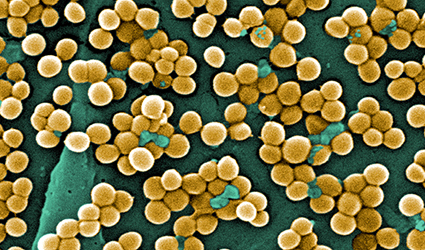New chemical compounds to stop cancer metastasis
October 16, 2018
Source: drugdu
 1,007
1,007

A team of researchers at the University of California, Riverside, under the leadership of Maurizio Pellecchia, a professor of biomedical sciences at UCR's School of Medicine, unearthed a path through which the chemotherapeutic medicine paclitaxel can hit at cancer cells on the move which cause metastases.
They designed a chemical compound called as 123B9 which target ephrin type-A receptor 2 (EphA2), an oncogene. They fastened paclitaxel on the surface of 123B9 to hit at EphA2 which is responsible for cancer metastases by enabling cancer cells to enter circulation from the primary tumor site.
The study findings are published in ACS Chemical Biology.
Pellecchia said, "But the exact mechanism by which 123B9 binds to its target remained elusive, which hampered the design of even more potent and effective agents."
A more potent and effective chemical agent to target EphA2 was then developed to tackle this issue and then, the exact combined structure of the chemical agent and the receptor bounded by ligands was visualized in three dimensions with the help of an associate professor of biochemistry at UCR, Jikui Song. This gave a clear picture of how the newly developed chemical binds with EphA2. Hence, chemical agents stronger than 123B9 were developed.
"The structural studies gave important clues to us on how our agents interact with the EphA2 at the atomic level," said Pellecchia, who holds the Daniel Hays Chair in Cancer Research. "We were thus able to modify 123B9 extensively, which resulted in several intermediary agents, and ultimately in the novel, potent, and selective agents 135H11 and 135H12."
"These agents can still carry a chemotherapy drug to the cancer cell, but they don't need to, being anti-metastatic and potent agents themselves," said Pellecchia, who is also the founding director of the Center for Molecular and Translational Medicine at UCR. "When they bind to EphA2, they cause internalization and degradation of the receptor inside the cell, thus preventing cancer cells from entering circulation and metastasizing."
The new chemical derivatives 135H 11/ H12 were then tested on pancreatic cancer cells which confirmed their metastases preventing function. This validated Pellecchia's hypothesis which suggested that these chemicals could be administered to combat metastases in cancer.
By editorRead more on
- CoreMedik Unlocks Dual Certifications for Implantation & Intervention of Artificial Heart December 25, 2025
- First in over 70 years! New drug for schizophrenia approved in China December 25, 2025
- Is the “anti-aging drug” a scientific breakthrough or a capital game? December 25, 2025
- Wegovy oral tablets receive FDA approval, ushering in the “dual-dosage era” for GLP-1 weight-loss drugs December 25, 2025
- The leading medical device company’s new venture is aiming for an IPO! December 25, 2025
your submission has already been received.
OK
Subscribe
Please enter a valid Email address!
Submit
The most relevant industry news & insight will be sent to you every two weeks.



